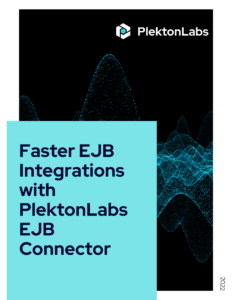As the world gets smaller and services continue to become more interconnected, word integration continues to become a part of the mainstream vocabulary. The term is more than just a buzzword and is the cornerstone of the digital transformation we are seeing today. In the fintech sector, data and application integration are two of the most common ones that are used to keep things running.
This begs the question: which one is better?
Data Integration vs. Application Integration in a Nutshell
Data integration is the process of combining data from various sources into a single, consolidated whole. It starts with the ingestion process and includes stages like cleansing, ETL mapping, and transformation. Data integration is generally batch-orientated and deals with data at rest.
In other words, the process that creates the data has already finished. This kind of integration allows analytics tools to produce effective and practical business intelligence. For example, retail stores need data integration for managing inventory, keeping track of sales, and keeping track of their employee records.
On the other hand, application integration involves enabling separate applications (each created for its own purpose) to work with each other. By merging and optimizing data between different software applications, organizations can achieve integrations that upgrade their infrastructures and enable fast and agile business operations. In short, it integrates operational data among multiple applications in real-time.
Application integration takes the cake when comparing the two, even though they both have their own uses.
But why is that?
To begin with, we’ve reached a point where we need results within seconds and so speed and agility are major factors when analyzing how practical each kind of integration is. Applications must respond to the latest data feeds, changes, and new applications much more quickly to stay agile. Instead of taking days or even weeks to transfer data from one application to another and adjust to the new data accordingly, businesses need to respond in minutes.
In contrast, data integration is a tad bit more time-consuming. It is processed in daily batches for the most part, which takes time that the average fast-paced business simply cannot spare.
The data from the integration is needed to examine how the business is performing if there are any issues that need to be addressed, and influence decisions that are made in the future. With all the competition around, companies can’t afford to wait for this data.
A high level of agility is needed for businesses and services to stay afloat. Application integration software can send data between several OLTP (online transaction processing) applications, from one point to another, at a time. In one process a certain application can act as a source, while in another, it serves as a destination. Application integration works in real-time and delivers data and information almost instantaneously.
Moreover, Software as a Service or SaaS has made the use of application data a necessity. While data still tends to be locked away in databases behind firewalls, it is also split or fragmented in various SaaS applications too. An application API is needed to access this fragmented data, which in turn requires application integration.
Also, applications have become easier to deal with, thanks to the advent of APIs and services like MuleSoft. Open APIs tend to greatly reduce the complexity of integrating applications in real-time. Cloud platforms also provide a new kind of clarity for integrating applications for live exchanges.
Final Thoughts
Both application and data integration have their own roles to play in businesses. In fact, companies could not function without either one. However, with a rapidly increasing dependence on connectivity and the need for constant agility, the world will rely on application integration to keep up. Businesses need application integration to beat their competition and connect with clients and partners faster than ever before.
Does all this mean data integration will become obsolete? Data integration will always be around since businesses need it for day-to-day processes and operations. However, application integration will take center stage since it is the only way the world can keep up with the rapidly evolving need for integration. The future for integration is based on applications, events, and real-time responses.
If you want your application integration to be airtight and take your business off the ground, investing in a great MuleSoft Consultancy would make all the difference in the world.




